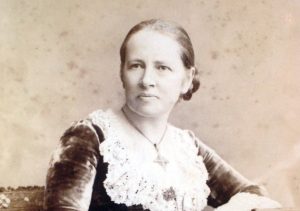Introduction to Elizabeth Anderson

Medical Career
Anderson unsuccessfully attempted to enroll in the hospital’s Medical School but was not allowed because of her sex. However, she was allowed to attend private tuition in Latin, Greek and materia medica with the hospital’s apothecary, and she could continue her work as a nurse simultaeneously. She also employed a tutor to study anatomy and physiology three evenings a week. Eventually, after much deliberation, she was allowed into the dissecting room and the chemistry lectures. But, she became an unwelcome presence among the male students, who in 1861 presented a memorial to the school against her admittance as a fellow student, prompting her to leave the Middlesex Hospital. But, she did so with an honours certificate in chemistry and materia medica.
She had privately obtained a certificate in anatomy and physiology, because of which she was admitted in 1862 by the Society of Apothecaries. They could not legally exclude her on account of her sex, according to the conditions of their charter. She continued her battle to qualify. She persevered and studied privately with various professors, including some at the University of St Andrews, the Edinburgh Royal Maternity and the London Hospital Medical School.
In 1865, she finally got a license to practice from the Society of Apothecaries, the first woman qualified in Britain to do so openly. But unfortunately, The Society of Apothecaries immediately amended its regulations to prevent other women obtaining a licence.
Even though she was now a licentiate of the Society of Apothecaries, she could not get employment at any hospital because she was a woman. In late 1865, Garett-Anderson opened her own practice. At first patients were scarce, but the practice gradually grew. In 1865, there was an outbreak of cholera in Britain, affecting both rich and poor, and in their panic, some people forgot any prejudices they had in relation to a female physician. In the first year, she tended to 3,000 new patients, who made 9,300 outpatient visits to the dispensary. The University of Sorbonne, Paris was in favour of admitting women as medical students, that is why she painstakingly studied French so that she could apply for a medical degree, which she obtained in 1870.
In 1874, she co-founded London School of Medicine for Women with Sophia Jex-Blake and became a lecturer. That school was the only teaching hospital in Britain to offer courses for women. Garrett Anderson was also active in the women’s suffrage movement even though she was not as active as her sister.